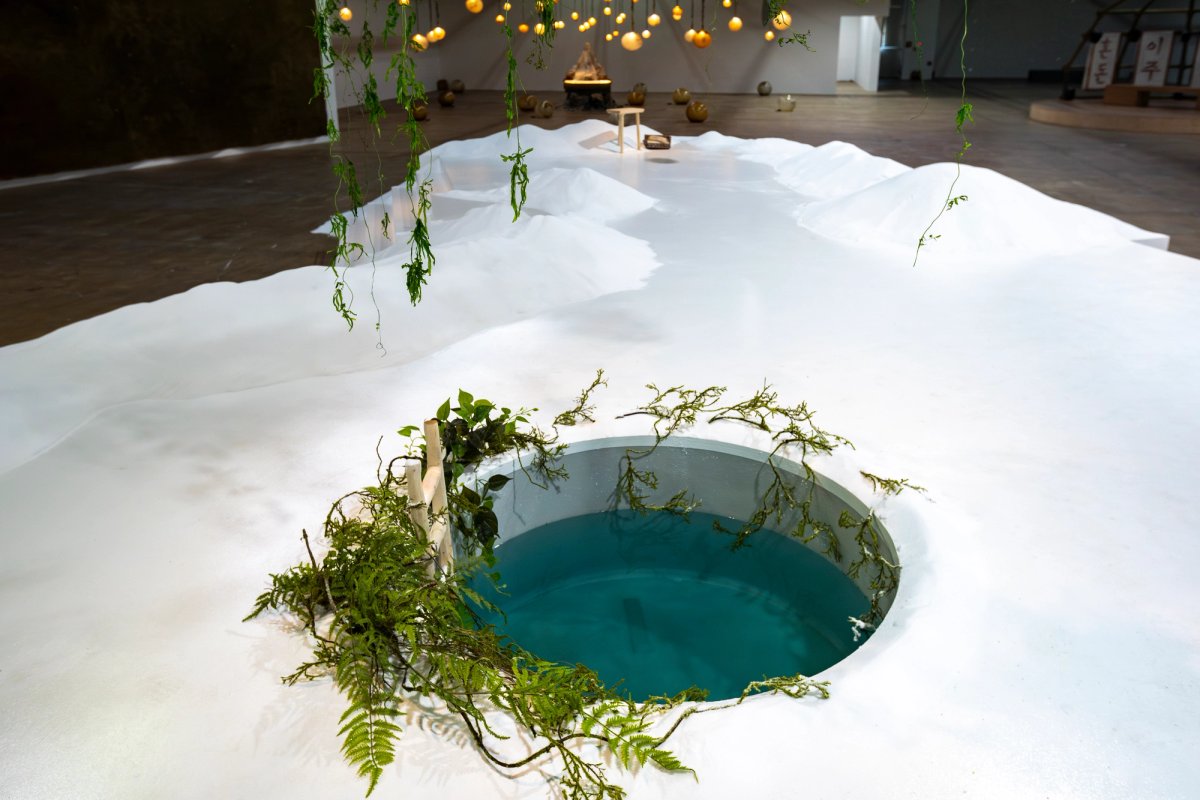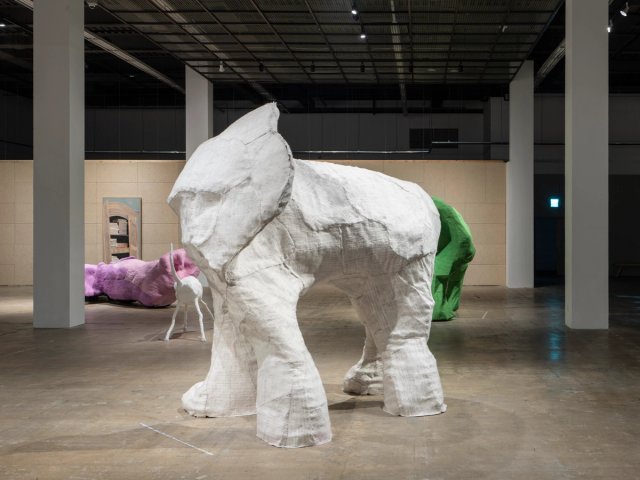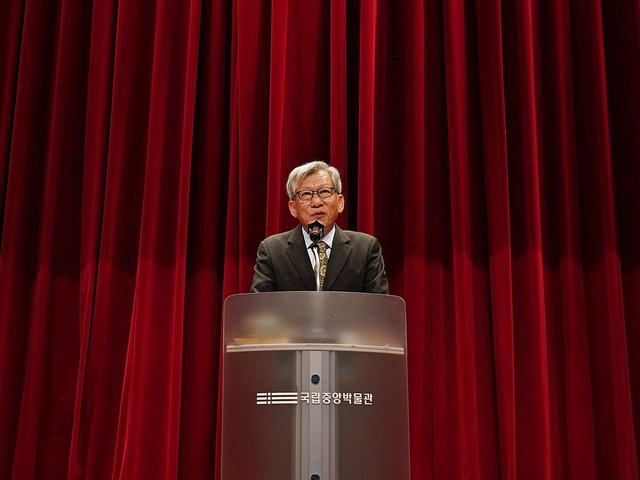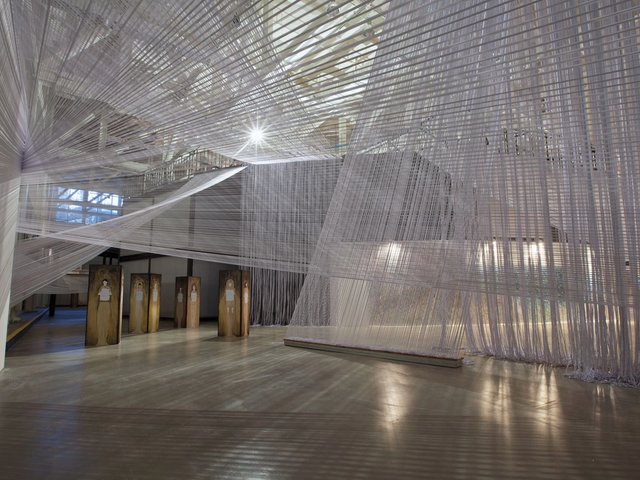Every edition of the Korean city’s storied biennale includes the invocation of the revolutionary “spirit of Gwangju” with a frequency bordering on zeal. Both city and exhibition have reason for that: the former bled for it, and the latter commemorates the 1980 pro-democracy uprising and military massacre of civilians that presaged Korea’s eventual democratisation. The city's pride in hosting Korea’s most renowned exhibition and what may well be the only contemporary art biennial explicitly dedicated to political resistance runs deep.
This year’s Gwangju Biennale, titled Pansori, takes a decidedly subtler approach to this theme than most prior iterations, channeling through the idea of the titular form of local traditional folk opera.
“Pansori is to Gwangju’s region an important cultural element, it ignites the Gwangju spirit," the exhibition’s artistic director Nicolas Bourriaud tells The Art Newspaper. It provides a way to "give voice to the subalterns", particularly emphasising women, the LGBTQ+ community, migrants and indigenous populations.
Along with the curators Sophia Park, Barbara Lagié and Kuralai Abdukhalikova, Bourriaud collaborated with the renowned Korean author Han Kang. Han, who in mid-October received the 2024 Nobel Prize in literature, wrote the novel Human Acts, a historical fiction account of the Gwangju Massacre that has become a defining text.
For the biennial, she composed the poetic lyrics to a contemporary Pansori-style opera, which Bourriaud describes as “very introverted and personal, the opposite of the epics of the traditional Pansories.”
The structure of the exhibition, Bourriaud says, is "weird and musical," the galleries all have "sounds coursing through them.” He adds: “It is not a black box, but with sounds overlapping.”
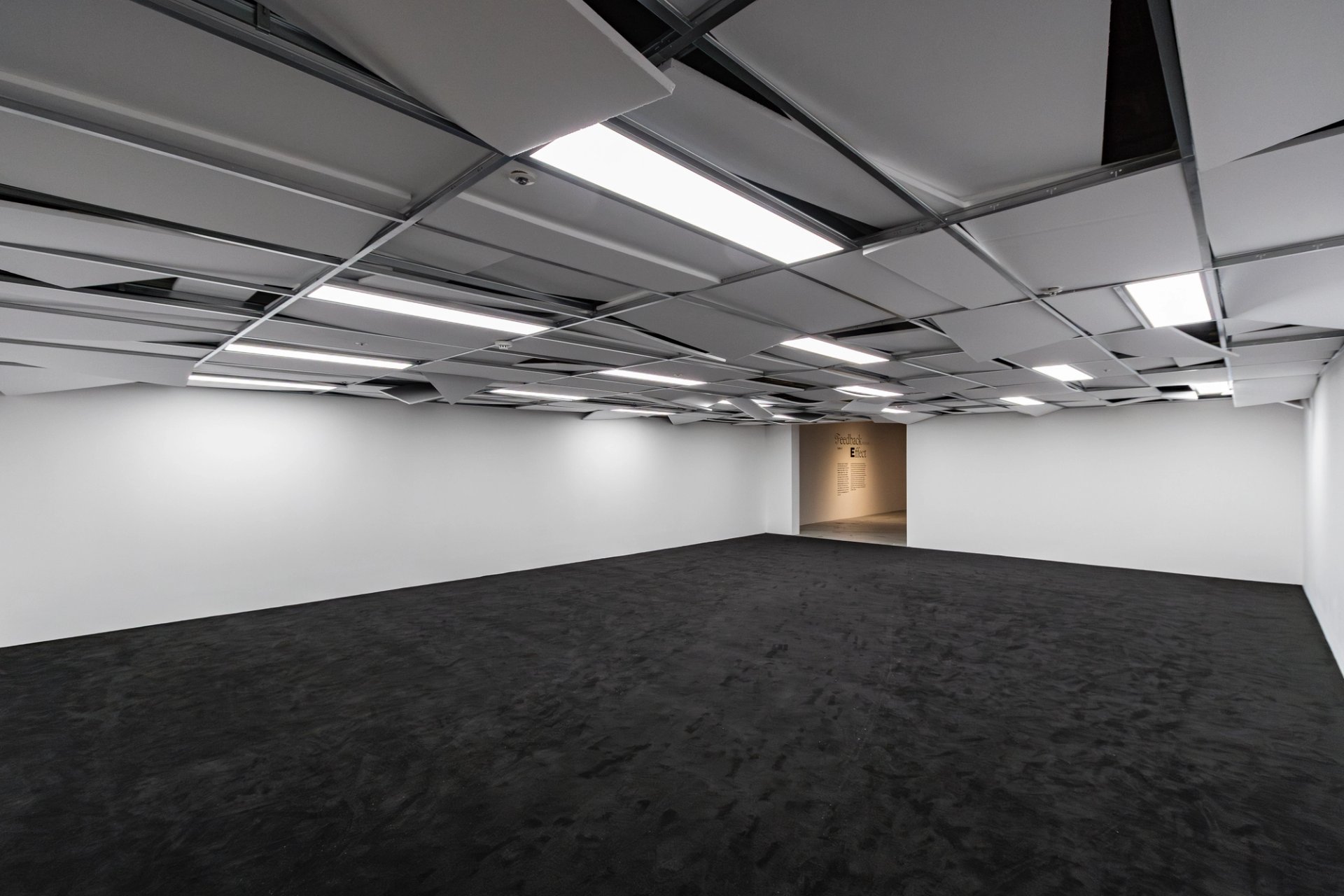
Cinthia Marcelle, Não existe mais lugar neste lugar (There Is No More Place in This Place) (2019-2024) Image: courtesy of the artist and Galeria Luisa Strina
The show opens with a literal black box: Emeka Ogboh’s dark hallway playing Oju 2.0 (2022), which forms a sort of anti-statement. Then Cinthia Marcelle’s 2019 There Is No More Place in This Place (2019), a room replicating a dull office space in what appears to be the aftermath of a very elegant earthquake, continues that sensory displacement.
The 72-artist show thereafter settles into more familiar rhythms, though with other strong works in the initial section “Feedback Effect” including Choi Hanyel's abstracted, monochrome versions of his imposing sculptures. They feel quieter, more contemplative than the colourfully masculine shapes that first burnished his emerging star two years ago.
Upstairs, in the “Polyphonies” section, an ominously slowed and unctuous rendition of the 1983 pop ballad Owner of a Lonely Heart follows visitors out of Yuyan Wang’s video Green Grey Black Brown 2024 and echoes around Gallery 3.

Max Hooper Schneider, LYSIS FIELD (2024) Image: courtesy of the artist and Francois Ghebaly Gallery, Los Angeles, High Art, Paris and Maureen Paley, London
The music accompanies Wang’s compelling, repellent footage of slurping sludge, algae blooms, all manner of ecological degradation, interspersed with close-ups from factories assembling plastic diorama landscapes. Humanity is destroying the real to build artifice. The music particularly washes over Max Hooper Schneider’s adjacent installation Lysis Field, a life-size fake landscape echoing those manufactured in Green Grey Black Brown 2024.
A different eerie environmental drama plays out in Unmake Lab’s Ecology for Non-Futures (2022-23), starting with trail camera shots of wildlife segueing into AI-generated images of wild animals—but the result is distortedly, weirdly wide-eyed due to the predominance of cutesy animal pictures in the data set. The kewpie-faced abominations recall a famously badly taxidermy tiger from Korea. First stuffed by an inelegant amateur, then badly reconfigured a few times, it became beloved for its crossed eyes and lolling tongue. Having been stolen, it now only exists in pictures—and our nightmares; an icon of the deterioration caused by endless digital replication, like a game of telephone, or a soul stolen by a camera shutter.
Han Kang’s haunting lines of loss and grief run in the catalogue, and in an opening performance that can be viewed online, but they are not featured in the main exhibition. Likewise, the Gwangju spirit was in fuller bloom at the some of the side venues, and several of the 31 national pavilions running alongside the main exhibition.
Myanmar's mostly exiled dissident artists flourished at the country's pavilion, while Thailand included sharp works such as Jakkai Siributr’s gorgeously bright tapestries depicting the most despicable of dark moments, including the Thai military’s shooting down at the border of Rohingya refugees fleeing genocide.
Gwangju’s inaugural US pavilion, titled Rhythmic Vibrations, channeled the the Asia Art Museum of San Francisco, the home institution of the curators Abby Chen and Naz Cuguoglu, with a selection of installations and videos mostly about Asian-American experiences. The pavilion was uncomfortably situated in the May 18 Memorial Culture Center dedicated to the Gwangju Massacre, which the US government had endorsed.
In the US pavilion, Chang Li-Ren's 2024 video SW 1992.11 exploring derelict sites in outlying island Matsu from Taiwan’s former brutal military dictatorship, which like Korea’s was American-backed, perhaps honours the massacre memorial more. And the military references take an absurdist bent with TT Takemoto’s Looking for Jiro (2011), which finds some form of humour in Japanese-American internment during the Second World War.
Yet amidst all the cacophonous soundtracks, Pansori feels relatively muted by Gwangju standards. It opened the same week that Korea’s right-wing president appointed the judge Ahn Chang-ho to chair, who opposes LGBTQ+ rights, to the National Human Rights Office of Korea. And it came not long before the US, Korea’s biggest ally, and former occupier, voted in a candidate whose vilification of opponents as “communists” echoes the Korean army’s justifications of violence in the 1980s.
Our last shot at salvaging this melting planet from becoming sludge is fast fading. Delicate melodies are becoming incongruous with our screaming times.


